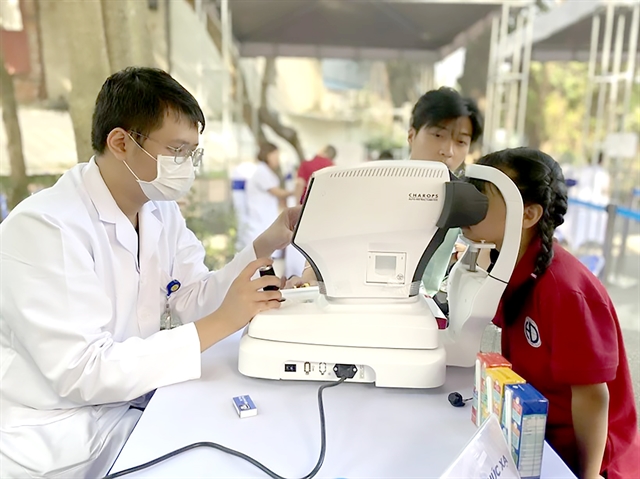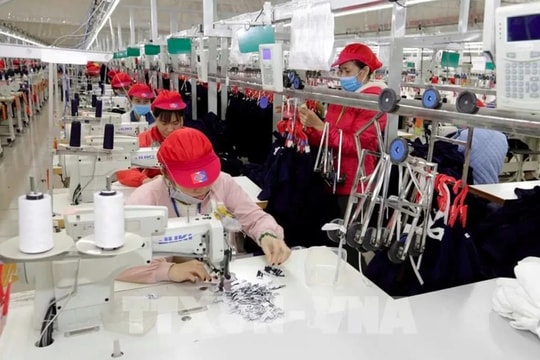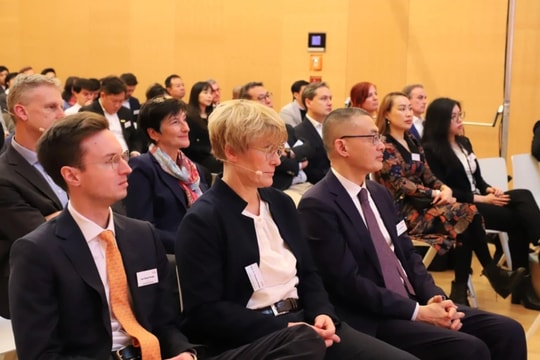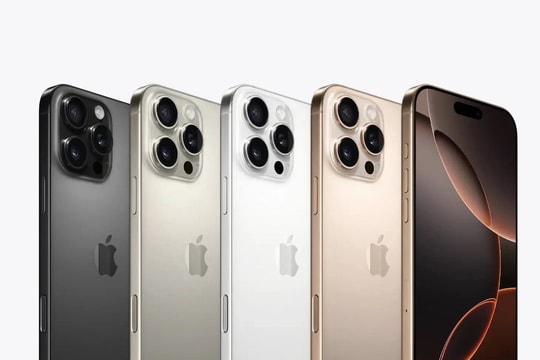 |
| A doctor examines a students’s eyes at the Hoàng Diệu Primary School in Ba Đình District in Hà Nội. — VNA/VNS Photo |
HÀ NỘI — Recent medical studies have shown that the rate of myopia in Vietnamese children is increasing, especially in cities. In some classes, more than 50 per cent of the students have myopia.
This information was given at the launch of the 'Healthy Eyes Brighten the Future' programme organised by the National Center for Health Communication and Education under the Ministry of Health (MoH), in coordination with the Việt Nam National Eye Hospital (VNEH) and other partners.
The event, with the theme 'Prioritising children's eye care', was held on Monday at the Hoàng Diệu Primary School in Hà Nội’s Ba Đình District to mark World Sight Day on October 10.
Increased rate of myopic students
Speaking at the programme launch, Deputy Minister of Health Nguyễn Thị Liên Hương said that in recent years, the MoH had paid special attention and care to children.
Currently, all children under six nationwide are granted free health insurance cards, and nearly 100 per cent of Vietnamese children are fully vaccinated, according to the deputy minister.
However, a survey on vision problems -- specifically, refractive errors -- in children in some primary and secondary schools in Hà Nội and HCM City conducted by the VNEH in 2020 and 2023 showed that 51 per cent of children in Hà Nội have refractive errors, of which myopia accounts for 37.5 per cent.
In HCM City, 75.6 per cent of surveyed children had refractive errors and 52.7 per cent of those had myopia.
The Deputy Minister said that one of the targets for child and student healthcare set out in the MoH’s Việt Nam Health Programme was to increase the rate of students screened for vision loss, prescribed glasses and instructed on vision training to 40 per cent by 2025.
The programme aims to spread awareness about the importance of protecting eye health and work with parents and schools to protect and care for children's eyes.
Vũ Mạnh Cường, Director of the National Center for Health Communication and Education, said that in the near future, the programme would be spread through many different activities, such as a healthy eye festival combined with eye exams, games for students and seminars for parents at 20 kindergartens and primary schools in Hà Nội and HCM City.
The programme is a practical activity, not only helping examine and detect early eye diseases in children, but more importantly sharing knowledge to guide parents and children in learning about the benefits and effectiveness of caring for the eyes, avoiding refractive errors and detecting eye diseases.
The programme has also released a series of education topics and a theme song with cheerful and lively lyrics to help spread the message.
Limit the use of electronic devices
Analysing the current state of eye diseases in children, Associate Professor Phạm Ngọc Đông, Deputy Director in charge of management and operation of the VNEH, added that according to the latest studies, the rate of myopia in children is increasing, especially in big cities.
Scientists have not yet determined the exact cause of myopia, but there are some risk factors that increase the condition, including spending too much time looking at close-up objects in narrow spaces, limited outdoor play and too much time reading books and using electronic devices.
Myopia and eye diseases can limit children's ability to learn.
If not detected early and given early intervention, the progression of myopia will accelerate, making the condition more severe.
Intervention will limit complications as well.
In order to prevent refractive errors in children's eyesight, parents need to increase the time children play outdoors, giving them open spaces and limiting the use of devices with screens, according to Đông.
In the current digital age, children are inevitably exposed to smart electronic devices such as computers and mobile phones, so parents need to remind children to regulate their usage so that they do not spend too much time using the devices.
Parents should understand the 20-20-20 principle to guide children. After 20 minutes of looking at an electronic device screen, they should let their eyes rest for at least 20 seconds and focus their eyes on an object more than 20 feet (about six metres) away. — VNS























